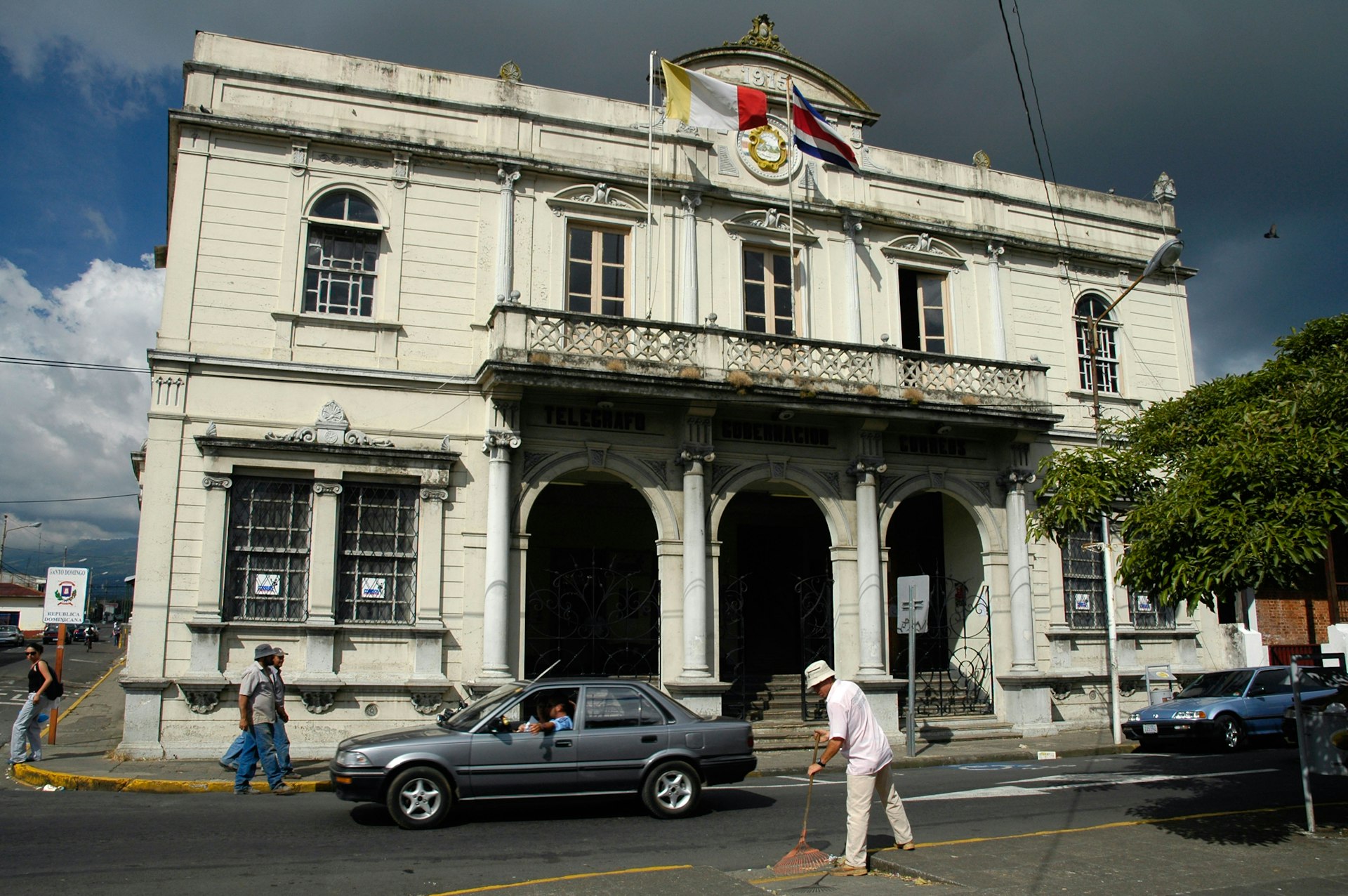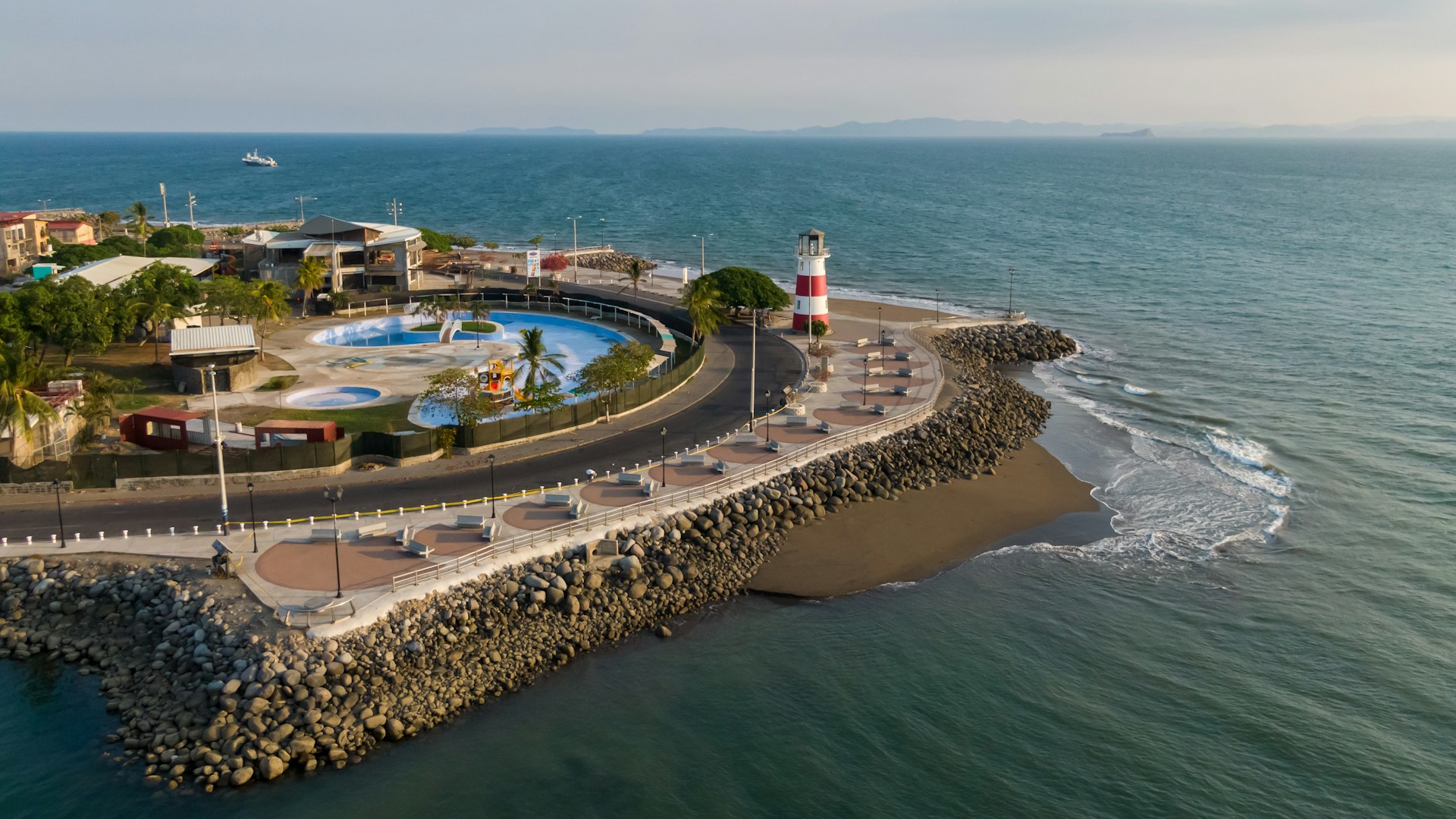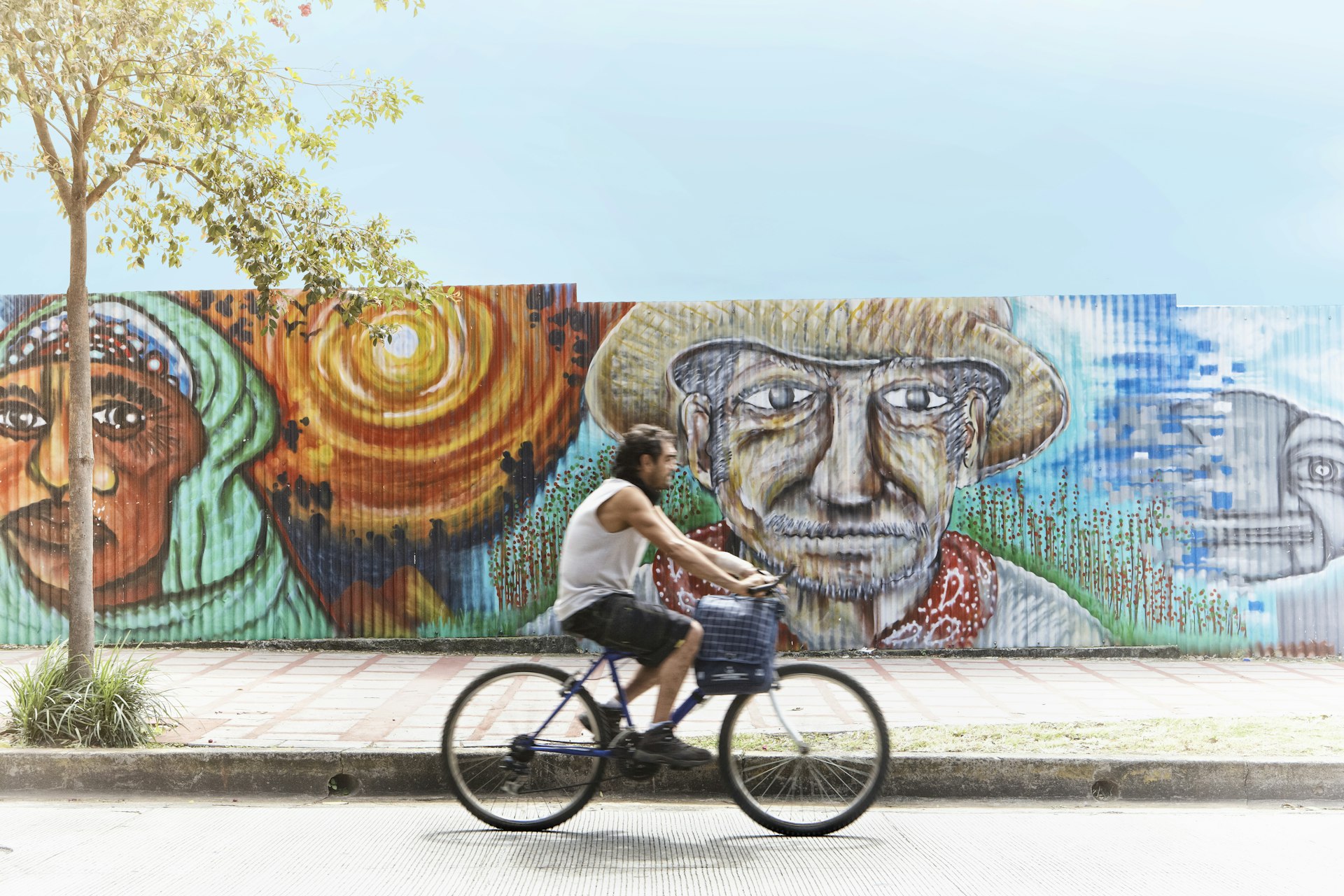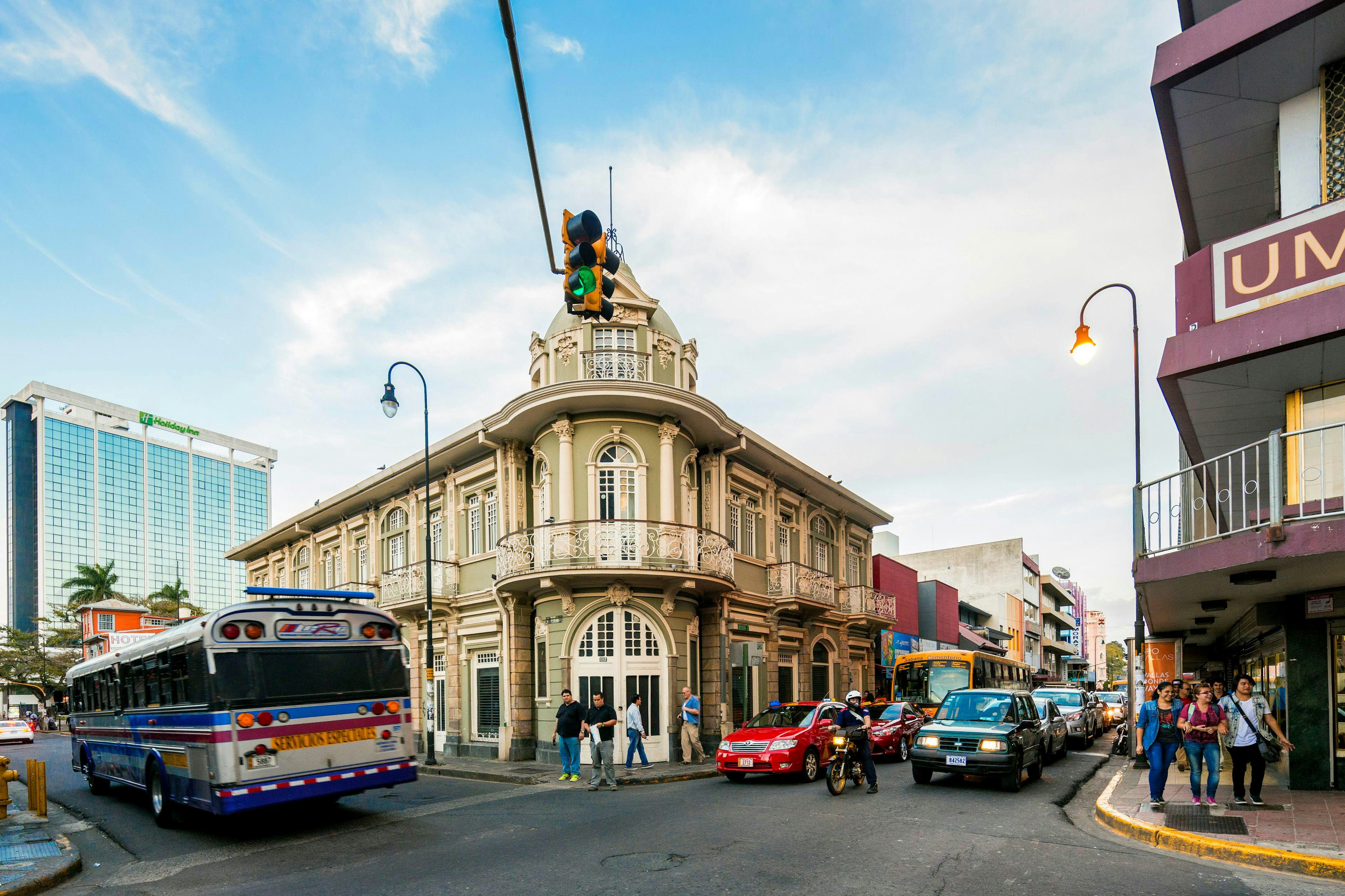Whether you arrive by land, sea, or air, Costa Rica is jam packed with things to see and do. And whether you're willing to brave the country's many water crossings in a rented 4x4, are looking forward to snapping photos out the bus window, or plan on chartering a private flight from point A to point B, there are almost equally many ways to get there.
If you're wondering how to navigate Costa Rica's roads, airports, and ferry terminals, here's the scoop on getting around this impressive country.
Arriving in Costa Rica
Costa Rica is well connected by air to other Central and South American countries, as well as the US, and can be reached via frequent, direct international flights from the US and Canada and from other Central American countries.
International flights typically arrive at Aeropuerto Internacional Juan Santamaría, 10.5 miles (17km) northwest of San José, in the town of Alajuela. The second-busiest airport is the Aeropuerto Internacional Daniel Oduber Quirós in Liberia, which also receives international flights from the USA, the Americas and Canada. It serves a number of American and Canadian airlines and some charters from London, as well as regional flights from Panama and Nicaragua.
There is a US$29 departure tax on all international outbound flights, payable in dollars or colones, though most carriers now include it in the ticket price. If fees are not included in your ticket, travelers will not be allowed through airport security without paying.
You can also cross a land border into Costa Rica from Panama or Nicaragua.
Flying
Inexpensive domestic flights between San José and popular destinations such as Puerto Jiménez, Quepos and Tortuguero will save you the driving time. The Colombian-owned airline Avianca (part of the Central American airline consortium Grupo TACA; www.avianca.com) is regarded as the national airline of Costa Rica and flies to the USA, plus Central and Latin America.
In Costa Rica, flight schedules change constantly and delays are frequent because of inclement weather. You should not arrange a domestic flight that makes a tight connection with an international flight. Domestic flights (excepting charter flights) originate and terminate in San José.
Travelers on a larger budget or in a larger party should consider chartering a private plane, which is by far the quickest way to travel around the country. It takes under 90 minutes to fly to most destinations, though weather conditions can significantly speed up or extend travel time.
Charter companies in the country include Carmon Air, Alfa Romeo Aero Taxi and Aero Caribe Air Charter. Flights can be booked directly through the company, a tour agency or some high-end accommodation. Luggage space on charters is extremely limited.
Bus
Regional buses
San José is the transportation center for the country, though there is no central terminal. Bus offices are scattered around the city: some large bus companies have big terminals that sell tickets in advance, while others have little more than a stop – sometimes unmarked.
There are two types of bus: directo and colectivo. The directo buses should go from one destination to the next with few stops; the colectivos make more stops and are very slow going. Buses can be very crowded but don’t usually pass up passengers on account of being too full. Note that there are usually no buses from Thursday to Saturday before Easter Sunday.
Trips longer than four hours usually include a rest stop as buses do not have toilets. Space is limited on board, so if you have to check luggage be watchful. Theft from overhead racks is rampant, though it’s much less common than in other Central American countries.
Bus schedules fluctuate wildly, so always confirm the time when you buy your ticket. If you are catching a bus that picks you up somewhere along a road, get to the roadside early.
For information on departures from San José, see for a reasonably up-to-date copy of the master schedule, or check the bus schedule for route planning. Another useful site for planning point-to-point bus trips is Yo Viajo, which has a phone app as well.
Local buses
Local buses are a cheap and reliable way of getting around Costa Rica. Fares range from less than US$1 to around US$20. Local buses operate chiefly in San José, Puntarenas, San Isidro de El General, Golfito and Puerto Limón, connecting urban and suburban areas. Most local buses pick up passengers on the street and on main roads. For years these buses were converted school buses imported from the US, but they have slowly been upgraded and are now mainly coaches.
Shuttles
The tourist-van shuttle services are a pricier alternative to the standard intercity buses. Shuttles are provided by Gray Line, Easy Ride, Monkey Ride, Tropical Tours and Interbus. All five companies run overland transportation from San José to the most popular destinations, as well as directly between other destinations (see the websites for the comprehensive list).
These services will pick you up at your hotel, and reservations can be made online or through local travel agencies and hotel owners. Popular destinations include Quepos/Manuel Antonio, Monteverde/Santa Elena, Jacó, Dominical, Uvita, Puerto Jiménez, Arenal, Montezuma and Mal País. Easy Ride offers international services directly from Jacó, Tamarindo and Liberia to Granada and Managua in Nicaragua and from Monteverde to Managua.

Car and motorcycle
Foreign drivers in Costa Rica are required to have a valid driver’s license from their home country. Many places will also accept an International Driving Permit (IDP), issued by the automobile association in your country of origin. After 90 days, however, you will need to get a Costa Rican driver’s license.
Gasoline (petrol) and diesel are widely available, and 24-hour service stations are along the Interamericana. At the time of research, fuel prices averaged around US$1.10 per liter. In more remote areas, fuel will be more expensive and might be sold at the neighborhood pulpería (corner store). Spare parts may be hard to find, especially for vehicles with sophisticated electronics and emissions-control systems.
Renting a car
There are car-rental agencies in San José and in popular tourist destinations on the Pacific coast. All of the major international car-rental agencies have outlets in Costa Rica, though you can sometimes get better deals from local companies.
Motorcycles (including Harley-Davidsons) can be rented in San José and Escazú, but considering the condition of the roads it's not recommended.
Because of the rough terrain, it's necessary to invest in a 4WD unless travel is limited to the Interamericana. Many agencies will insist on 4WD in the rainy season, when driving through rivers is a matter of course.
To rent a car you'll need a valid driver’s license, a major credit card and a passport. The minimum age for car rental is 21 years. It’s possible to rent with a debit card, but only if you agree to pay full insurance and leave a deposit for traffic violations (check with your agency ahead of time).
Carefully inspect rented cars for minor damage and make sure that any damage is noted on the rental agreement. If your car breaks down, call the rental company. Don’t attempt to get the car fixed yourself – most companies won’t reimburse expenses without prior authorization.
Prices vary considerably; on average you can expect to pay more than US$250 per week for a standard SUV, including kilometraje libre (unlimited mileage). Economy cars are much cheaper upwards of US$150 a week (prices are not including mandatory local insurance).
Rental rates fluctuate wildly, so shop around. Some agencies offer discounts for extended rentals. Note that rental offices at the airport charge an extra fee in addition to regular rates.
Thieves can easily recognize rental cars. Never leave anything in sight in a parked car – nothing! – and remove all luggage from the trunk overnight. If possible, park the car in a guarded parking lot rather than on the street.
Car insurance in Costa Rica
Some roads in Costa Rica are rough and rugged, meaning that minor accidents or car damage are common. Costa Rican insurance is mandatory, even if you have insurance at home. Expect to pay about US$10 to US$40 per day. Many rental companies won’t rent you a car without it. The basic insurance that all drivers must buy is from a government monopoly, the Instituto Nacional de Seguros.
This insurance does not cover your rental car at all, only damages to other people and their car or property. It is legal to drive with this insurance only, but it can be difficult to negotiate with a rental agency to allow you to drive away with just this minimum standard. Full insurance through the rental agency can be up to US$60 a day.
Note: If you pay basic insurance with a gold or platinum credit card, the card company may take responsibility for damage to the car, in which case you can forgo the cost of the full insurance. Make sure you verify this with your credit card company ahead of time.

Driving in Costa Rica
There are speed limits of 100km/h to 120km/h or less on highways; limits will be posted. The minimum driving speed on highways is 40km/h. The speed limit is 60km/h or less on secondary roads (in urban areas, the speed limit is usually 40m/h).
Traffic police use radar, and speed limits are sometimes enforced with speeding tickets. Tickets are issued to drivers operating vehicles without a seat belt. It’s illegal to stop at an intersection or make a right turn on a red. At unmarked intersections, yield to the car on your right. Drive on the right. Passing is allowed only on the left.
If you are issued with a ticket, you have to pay the fine at a bank; instructions are given on the ticket. If you're driving a rental car, the rental company may be able to arrange your payment for you – the amount of the fine should be on the ticket.
Police have no right to ask for money, and they shouldn’t confiscate a car unless:
- the driver cannot produce a license or ownership papers/rental agreement
- the car lacks license plates
- the driver is drunk or the driver has been involved in an accident causing serious injury.
If you're driving and see oncoming cars with headlights flashing, it often means that there is a road problem or a radar speed trap ahead. Slow down immediately.
Driving in Costa Rica will likely necessitate a river crossing at some point. Unfortunately, too many travelers have picked up their off-road skills from watching TV, and every season Ticos get a good chuckle out of the number of dead vehicles they help wayward travelers fish out of waterways. Most insurance policies do not cover damage caused by flooding or driving through a river, so be aware of the extent of your policy.
Taxi
Local taxis
In San José, taxis have marías (meters) and it's illegal for drivers not to use them. Outside San José, most taxis don’t have meters and fares tend to be agreed upon in advance. Bargaining is acceptable.
In some towns there are colectivos (shared taxis). Although colectivos are becoming increasingly difficult to find, the basic principle is that the driver charges a flat fee (usually about US$1) to take passengers from one end of town to the other.
Taxi drivers are not normally tipped unless they assist with your luggage or have provided an above-average service.

Rural and regional taxis
Taxis are considered a form of public transportation in remote areas. They can be hired by the hour, half-day or full day, or you can arrange a flat fee for a trip. Meters are not used on long trips, so arrange the fare ahead of time. Fares can fluctuate due to worse-than-expected road conditions and bad weather in tough-to-reach places.
The condition of taxis varies from basic sedans held together by rust to fully equipped 4WDs with air-con. In some cases, taxis are pick-up trucks with seats built into the back. Most towns will have at least one licensed taxi, but in some remote villages you may have to get rides from whomever is offering – ask at pulperías (corner stores).
In rural areas, 4WDs are often used as taxis and are a popular means for surfers (and their boards) to travel from their accommodations to the break. Prices vary wildly depending on how touristy the area is, though generally speaking a 10-minute ride costs US$5 to US$20.
It's possible to rent a taxi for the day if you agree on a price in advance. Prices vary depending on where you want to visit and how long you need the car. This is often an easier way to see further-afield sights without renting a car. A trip to a volcano followed by a long-distance trip to the beach from San José, for example, will cost around US$200 (quite reasonable with four people in the car).

Bicycle
With an increasingly large network of paved secondary roads and heightened awareness of cyclists, Costa Rica is emerging as one of Central America’s most exciting cycle-touring destinations. In the Central Valley and Highlands, there's a burgeoning road biking scene and visitors are likely to see Lycra-clad cyclists climbing and zooming down the attractive winding roads, taking in the epic scenery. That said, many roads are narrow, potholed and winding and there are no designated cycle lanes, so there’s an element of risk involved.
Bikes, mostly mountain bikes and beach cruisers, can be rented in towns with a significant tourist presence for US$10 to US$20 per day. A few companies organize bike tours around Costa Rica.

Boat
In Costa Rica there are some regular coastal services, and safety standards are generally good. Ferries cross the Golfo de Nicoya, connecting the central Pacific coast with the southern tip of the Península de Nicoya.
The Coonatramar ferry links the port of Puntarenas with Playa Naranjo several times daily. The ferry Naviera Tambor travels between Puntarenas and Paquera frequently each day, for a bus connection to Montezuma.
On the Golfo Dulce a daily passenger ferry links Golfito with Puerto Jiménez on the Península de Osa. On the other side of the Península de Osa, water taxis connect Bahía Drake with Sierpe.
On the Caribbean coast there are various bus and boat services that run several times a day, linking Cariari and Tortuguero via La Pavona, while another links Parismina and Siquirres (transfer in Caño Blanco).
Boats ply the canals that run along the coast from Moín to Tortuguero; although no regular service exists, tourists can prebook water taxis to transport them around these waterways. Costa Rica and Nicaragua have disputed the San Juan as territory, so take your passport if you want to explore these waters. You can try to arrange boat transportation for Barra del Colorado from Tortuguero.
You may also like:
6 road trips in Costa Rica that aren't for the faint of heart
The best national parks in Costa Rica
Central America’s most popular volcano adventures


